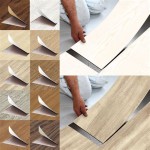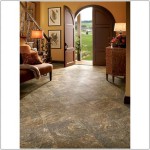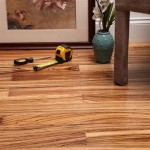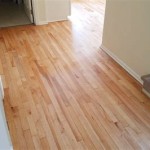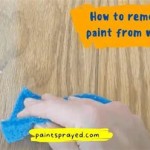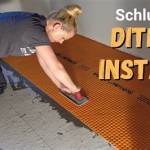How To Fix Termite Damaged Wood Floors In House
Discovering termite damage in wood floors can be a homeowner's nightmare. These silent destroyers can compromise the structural integrity of a house if left unchecked. Addressing the problem promptly and effectively is crucial to prevent further damage and protect the value of the property. This article provides a comprehensive guide on how to identify, assess, and repair termite-damaged wood floors.
The process involves several steps, starting with identifying the signs of termite infestation, accurately assessing the extent of the damage, selecting appropriate repair methods, and following through with preventative measures to avoid future infestations. Each step demands careful attention and a methodical approach to ensure a successful outcome.
Identifying Termite Damage
The first step in addressing termite damage is accurately identifying its presence. Termites are often difficult to detect, as they work from the inside out, leaving the exterior of the wood seemingly intact. However, several telltale signs can indicate an infestation.
One of the most common indicators is the presence of mud tubes. These are small, pencil-sized tunnels that termites construct to travel between their colony and the wood they are consuming. These tubes are often found along foundation walls, in crawl spaces, or on exposed wood surfaces. Breaking open a mud tube will reveal live termites if the infestation is active. Additionally, the appearance of swarming termites, winged reproductive members of the colony, inside the home is a strong indication of a nearby infestation. These termites typically emerge in the spring.
Another sign to look for is damaged or hollow-sounding wood. Tapping on suspected areas of the floor can reveal weak spots or areas where the wood has been eaten away from the inside. Termite-damaged wood often has a layered or rippled appearance. In some cases, small holes or exit points may be visible on the surface of the wood.
Keep in mind that identifying termite damage can sometimes be confused with damage caused by water or dry rot. Therefore, it is crucial to differentiate between the different types of wood degradation. Termites usually leave behind a distinct network of tunnels filled with their excrement, known as frass. This frass often appears as tiny, granular pellets. Water damage, on the other hand, typically results in discoloration, swelling, and a musty odor.
Assessing the Extent of the Damage
Once termite damage has been identified, the next crucial step is to accurately assess the extent of the damage. This assessment is necessary to determine the appropriate repair strategy. A thorough inspection involves carefully examining the affected areas and adjacent structures to understand the full scope of the problem. This may require removing sections of flooring or wall coverings to gain a clearer view of the underlying wood.
Start by visually inspecting the areas where termite damage has been initially detected. Use a screwdriver or awl to probe the wood in suspected areas. If the wood is soft or easily penetrated, it is likely that termite damage is present. Carefully document the location and severity of the damage.
Expand the inspection beyond the immediately affected areas. Termites can spread quickly, so it is important to check nearby floors, walls, and structural supports. Pay particular attention to areas where wood comes into contact with the ground or where moisture is present, as these are ideal conditions for termite infestation. Crawl spaces and basements should be carefully inspected.
In some cases, professional assistance may be required to accurately assess the extent of the damage. A qualified pest control company or structural engineer can conduct a thorough inspection and provide a detailed report of the findings. They can use specialized equipment, such as moisture meters and thermal imaging cameras, to detect hidden damage and identify the source of the infestation. The cost of a professional inspection can vary depending on the size and complexity of the property.
After completing the assessment, create a detailed plan for the repair process. This plan should outline the specific areas that need to be addressed, the materials required, and the estimated cost of the repairs.
Repairing Termite-Damaged Wood Floors
The method used to repair termite-damaged wood floors will depend on the extent of the damage. Minor damage may be repaired with wood fillers or consolidants, while more extensive damage may require replacing entire sections of flooring. In some cases, structural repairs may be necessary to reinforce the floor joists or subfloor.
For minor termite damage, the process typically involves removing the damaged wood and filling the affected area with a wood filler or epoxy. First, carefully remove any loose or crumbling wood using a chisel or utility knife. Clean the area thoroughly to remove any debris or frass. Apply a wood consolidant to the remaining wood to strengthen it and prevent further decay. Once the consolidant has dried, fill the void with a wood filler or epoxy that is specifically designed for repairing damaged wood. Allow the filler to dry completely and then sand it smooth to match the surrounding surface. Stain or paint the repaired area to blend in with the existing floor.
When the termite damage is more extensive, it may be necessary to replace entire sections of the flooring. This involves cutting out the damaged area and installing new wood planks or boards. To do this, carefully measure and cut the replacement wood to match the dimensions of the existing floor. Apply construction adhesive to the subfloor and position the new wood securely in place. Use nails or screws to fasten the replacement wood to the subfloor. Sand the surface smooth and refinish the entire floor to ensure a uniform appearance. When matching existing flooring, attention to the wood species, grain pattern, and finish is crucial to achieve a seamless repair.
In cases where the termite damage has compromised the structural integrity of the floor, it may be necessary to reinforce the floor joists or subfloor. This may involve sistering new joists alongside the existing ones or installing additional support beams. Consult with a structural engineer to determine the appropriate repair strategy. It is crucial to address any structural damage promptly to prevent further deterioration and ensure the safety of the building.
Regardless of the repair method used, it is essential to address the underlying termite infestation. This may involve treating the soil around the foundation of the house with a termiticide or using bait stations to eliminate the colony. Consult with a qualified pest control company to determine the most effective treatment options. Failure to address the termite infestation will result in further damage to the wood floors and other structural components of the house.
Preventative Measures
After repairing termite-damaged wood floors, taking preventative measures is crucial to avoid future infestations. These measures should focus on eliminating conditions that attract termites and making the house less susceptible to infestation. Consistent maintenance and regular inspections are essential components of an effective termite prevention strategy.
One of the most important steps is to eliminate sources of moisture around the house. Termites are attracted to moist environments, so addressing any leaks or drainage issues is crucial. Ensure that gutters and downspouts are in good working order and that they direct water away from the foundation. Repair any leaks in plumbing fixtures or drainage pipes. Improve ventilation in crawl spaces and basements to reduce humidity levels. Consider installing a vapor barrier in the crawl space to prevent moisture from seeping up from the ground.
Another preventative measure is to reduce the amount of wood that comes into contact with the ground. Remove any wood debris or landscaping mulch that is touching the foundation. Keep firewood and lumber stored away from the house. When building decks or other wooden structures, use treated lumber that is resistant to termites. Ensure that wood structures are properly ventilated to prevent moisture buildup.
Regularly inspect the house for signs of termite activity. Pay particular attention to areas where wood comes into contact with the ground or where moisture is present. Look for mud tubes, damaged wood, or swarming termites. If any signs of termite activity are detected, contact a qualified pest control company immediately. Early detection and treatment can prevent extensive damage and save significant repair costs.
Consider having the house treated with a termiticide as a preventative measure. Termiticides can be applied to the soil around the foundation of the house to create a barrier that prevents termites from entering. Bait stations can also be used to attract and eliminate termites. Consult with a qualified pest control company to determine the most appropriate treatment options for the specific property. Termiticide treatments often require professional application due to safety regulations and the need for specialized equipment.
Maintaining a proactive approach to termite prevention is essential for protecting the investment in the house. By implementing these preventative measures and conducting regular inspections, homeowners can significantly reduce the risk of future infestations and maintain the structural integrity of their wood floors and other wooden components.

The Types Of Termites That Can Damage Your Hardwood Floors And How To Fix Them

Termite Damaged Boards Fullerton 1 22 2024 Refinishwoodfloors Woodfloors

Termite Damage On Hardwood Floor Quickly Repaired

A Little Hardwood Floor Repair The Space Between

Assessing Termite Damage In Timber Floors

How Do You Repair Termite Damage El Gato Painting

How To Spot Termites Damage And Activity The Bug Master

Termite Damage In Hardwood Floor Thrasher Pest Control

Termites Floor Damage Wood Or Lamninate Flooring Orkin

Repair Hole In Damaged Hardwood Floor Slaughterbeck Floors Inc
See Also
